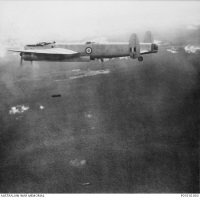On the morning of 16 June 1948 three European estate managers were murdered in two separate incidents in the Malaysian state of Perak by members of the Malayan Communist Party (MCP). That evening, the British declared a state of emergency in several districts of Perak and Johore which were extended the following day to the whole of the two states. On the 18th of June a state of emergency was declared for all of Malaya. The Malayan Emergency had begun.
The harsh post-war economic and social conditions also contributed to the rise of anti-government activity.
The Malayan government was slow to react to the MCP at first and did not appoint a director of operations to counter the insurgency until March 1950. The new director planned to address the underlying economic, social, and political problems facing the Chinese community while, at the same time, bringing government control to the fringe areas where the MCP received much of its support. Before this plan was fully implemented, however, the situation deteriorated further with the assassination of the British High Commissioner in October 1951.
Australia's involvement began in 1950 with the arrival of RAAF aircraft and personnel in Singapore. Dakotas from 38 Squadron were deployed on cargo runs, troop movements, and paratroop and leaflet drops in Malaya, while six Lincoln bombers of 1 Squadron provided the backbone of aerial operations. As the capacity of army and police units operating against the communists improved, however, the need for air power decreased, and by 1952 Lincolns were increasingly used as part of combined air-ground assaults against the communists. One of the major military successes of the conflict was one such coordinated operation in July 1954, east of Ipoh, in Perak state. In Operation Termite, as the exercise was known, five RAAF Lincolns and six from a RAF squadron made simultaneous attacks on two communist camps, followed by paratroop drops, a ground attack, and further bombing runs ten days later. The operation destroyed 181 camps and killed 13 communists; one communist surrendered.

Lincoln Bomber A73-33 of No 1 Squadron, RAAF, on a bombing mission over the Malayan jungle
By October 1955, when the 2nd Battalion, Royal Australian Regiment (2RAR), arrived in Penang, the outcome of the Emergency was no longer in doubt, although a lengthy mopping up stage followed, largely undertaken by Australian troops. After several false starts 2RAR crossed to the mainland in January 1956 to begin anti-communist operations. Over the next 20 months, as part of 28 Commonwealth Brigade, 2RAR participated in a variety of operations, mainly in Perak, one of the main areas of communist activity.
2RAR left Malaya in October 1957 and was replaced by 3RAR in the same month. After six weeks of training in jungle warfare 3RAR began driving the insurgents into the jungle in Perak and Kedah, separating them from food and other supplies. Early successes for the battalion confirmed the growing ascendancy of the security forces over the communists and by April 1959 one of the main communist centres, Perak, was declared secure.
Soldiers of 1st Battalion, Royal Australian Regiment (1RAR), in the jungle north of Baling, near the Thai border, Malaya, 1960
As the threat continued to dissipate, the Malayan government officially declared the Emergency over on 31 July 1960, though 1RAR remained in Malaya until October the following year, when 2RAR returned for a second tour. In August 1962 the battalion was committed to anti-communist operations in Perlis and Kedah, completing its tour in August 1963.
Thirty-nine Australian servicemen were killed in Malaya, although only 15 of these deaths occurred as a result of operations, and 27 were wounded, most of whom were in the army.
References:
Peter Dennis et al., The Oxford companion to Australian military history, Melbourne: Oxford University Press, 1995
P. Dennis and J. Grey, Emergency and Confrontation: Australian military operations in Malaya and Borneo 1950–1966, Official History of Australia's Involvement in Southeast Asian Conflicts 1948–1975, vol. 5, Sydney, Allen and Unwin and the Australian War Memorial, 1996
Source: https://www.awm.gov.au/articles/atwar/malayan-emergency (accessed 28 June 2019)